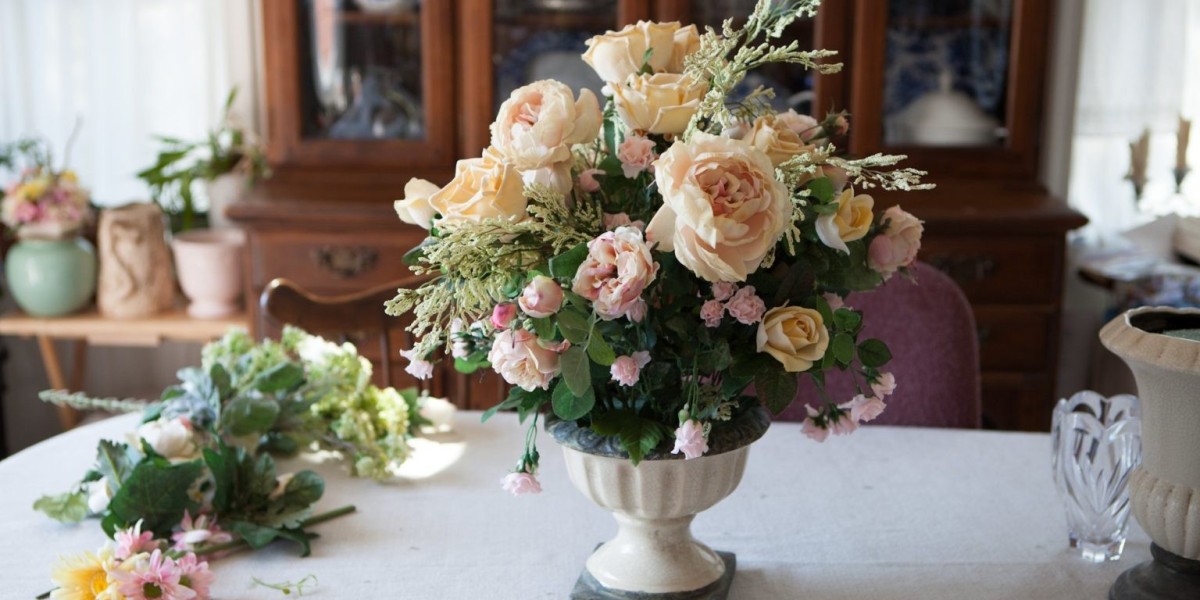The artificial flower market is expected to be valued at USD 3,146.0 million in 2024. For 2023, the valuation was marked at USD 2,987.7 million. The market is projected to progress from 2024 to 2034, with a CAGR of 5.5%. By 2034, the market value is forecast to reach USD 5,373.9 million.
The demand for artificial flowers is propelled as the product emerges as an alternative to the real flower. Manufacturers are leveraging existing technology to manufacture fake flowers that mimic the original ones. Scented artificial flowers are also being produced to combat the drawback of fake flowers having no smell as opposed to the real thing.
Artificial flower demand is accelerated as interior trends catch on in both residences and commercial spaces. Home décor is emerging as a significant trend, particularly in urban areas, with home renovations spurring people to decorate homes. Artificial flowers are also being used in commercial spaces as decorations. Weddings have emerged as a prominent source of sale for faux flowers.
Artificial flowers face the challenge of overcoming customer inclination toward real flowers. Customers prefer real flowers for the freshness they add to settings as well as the smell they provide. Real flowers are also dominant in areas where artificial flowers have not yet penetrated significantly. The cost of artificial flowers is also a worry, though manufacturers are making cheap flowers that appeal to the price-conscious.
Key Takeaways from the Artificial Flower Market
- The artificial flower market is projected to be valued at US$ 3,146.0 million in 2024.
- The material that is often used in artificial flowers is polyester. For 2024, polyester is anticipated to account for 35.7% of the market share.
- The use of artificial flowers in commercial spaces triumphs in the residential sector. For 2024, commercial application is expected to account for 61.4% of the market share.
- Australia is one of the promising countries for the market. For the forecast period, the CAGR for Australia is estimated to be 6.0%.
- China and India are two countries with potential for the market in Asia. The CAGR for China and India over the forecast period is anticipated to be 5.7% and 5.8%, respectively.
- The market is expected to register a CAGR of 5.6% in Germany over the forecast period.
Competition Analysis of the Artificial Flower Market
Technology is being sought to help design as well as add smells to artificial flowers. Offering the product at discounted prices is a common strategy among market players. Market players are positioning artificial flowers as a clear-cut competition to real flowers.
Key Companies in the Artificial Flower Market
- TreeLocate (Europe) Limited
- Foshan Tongxin Artificial Flowers Co., Ltd
- Dongguan Fusheng Arts Products Co., Ltd.
- NGAR TAT PRODUCTION FTY. LTD.
- Oriental Fine Art Co., Ltd.
- Silk Flower
- Diane James Designs, Inc.
- J. S. Flower Company Limited
- Nearly Natural
- Floral Home Décor
Recent Developments:
- In June 2023, an artificial flower exhibition was held in Mangalore, India, highlighting fake flowers made from waste.
- In June 2023, Williams Sonoma collaborated with floral designer Jeff Leatham to launch a range of artificial flowers.
Get Strategic Guidance from Our Analyst Contact us on: +1-347-918-3531
Key Segments
By Material:
- Polyester
- Plastic
- Paper
- Nylon
- Silk
- Others
By Application:
- Residential
- Commercial
By Distribution Channel:
- Supermarkets & Hypermarkets
- Specialty Craft Stores
- Florists
- Online
By Region:
- North America
- Latin America
- Europe
- South Asia
- East Asia
- Oceania
- The Middle East and Africa (MEA)



